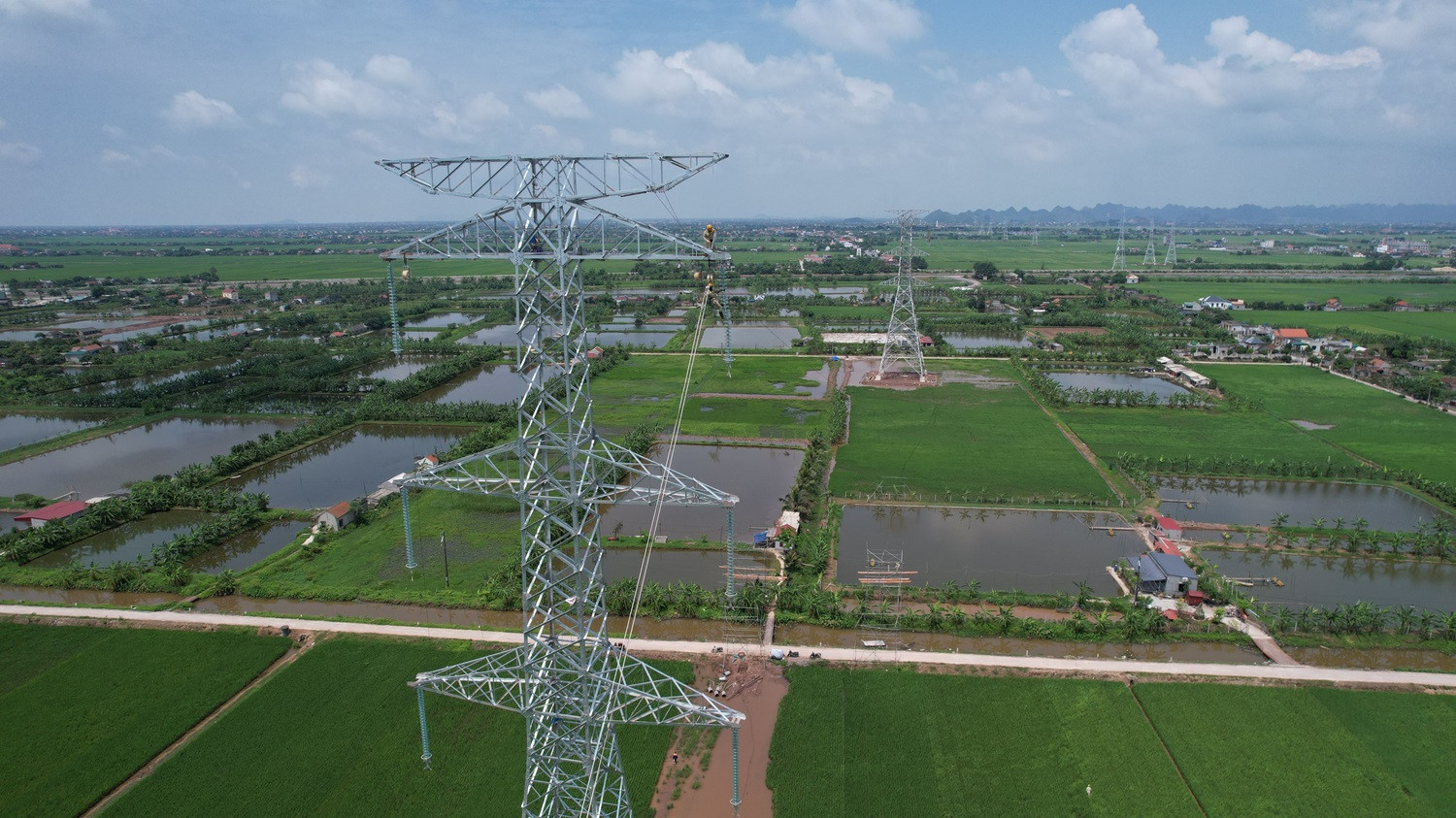
According to Electricity of Vietnam (EVN), the total electricity capacity of the entire system had reached 80,555MW by the end of 2023, an increase of 2,800MW over 2022.
Of this, total renewables capacity (wind, solar power) accounted for 26.9 percent (21,664MW), hydropower, including small-scale, 28.4 percent (22,872MW), coal-fired thermopower 33.2 percent (26,757MW), and gas-fired 8.9 percent (7,160MW).
Vietnam’s electricity system ranks second in Southeast Asia in scale and 23rd in the world. The Ministry of Industry and Trade (MOIT) reported that the indicators of electricity supply reliability have improved. The power loss rate during transmission and distribution decreased from 7.94 percent in 2015 to 6.5 percent in 2020 and 6.24 percent in 2022, the same as many developed countries.
However, supply capability remains a problem. After a serious electricity outage in May 2023, the government has applied measures to ensure electricity supply to ensure socio-economic development.
The Prime Minister has approved the eighth national power development plan for 2021-2030 (Plan 8. The most important points of Plan 8 include the development of more electricity generation projects and the harmonious development of renewables and traditional energy sources.
On April 1, 2024, the Prime Minister released a plan to implement Plan 8, which gave a push to speed up new projects.
As fuel resources are limited, Vietnam now has to import primary energy for domestic power production, including coal, oil and gas. In such conditions, using energy effectively and economically is one of the issues to which the government has attached much importance.
In June 2023, the government released Directive No20/TTg on practicing thrift in 2023-2025 and following years. Some specific targets have been set, including saving at least 2 percent of total electricity consumed nationwide, using 50 percent of LED lamps in public lighting, and developing rooftop power systems at offices and people’s houses.
Calculations show that if Vietnam can save 2 percent of electricity volume consumed as stipulated in the Prime Minister’s Directive 20, the country will be able to save 5 billion kwh of electricity each year, which is equal to the electricity output of a 1,200MW power plant.
The government has urged the implementation of the 500KV Circuit 3 Quang Trach - Pho Noi which is in charge of transmitting electricity from the southern and central regions to the North. Under the government’s instructions, the investment procedures related to the development of the important transmission line were quickly completed.
The Prime Minister has assigned MOIT to join forces with the State Capital Management Commission to instruct EVN to urgently complete the project and put it into use prior to June 30, 2024.
The government’s leaders take inspection tours to sites to timely resolve difficulties, and repeatedly urge ministries and agencies to create favorable conditions for contractors to speed up project implementation. Thanks to timely instructions, the project has been going rapidly.
High demand, sufficient supply
Reports show that electricity demand in the first five months of 2024 increased sharply and hydrological conditions were unfavorable. To save reservoir water, thermal power, especially thermal power in the north, was mobilized at a high rate.
In late April, hot weather in all three regions led to record high consumption of electricity with the nationwide maximum capacity reaching 47,670MW (April 27), an increase of 13.2 percent over the same period last year, while the maximum daily electricity output reached 993 million kwh (April 26).
Reasonable load dispatching and the electricity transmitted from the central and southern regions then successfully ensured sufficient electricity supply for business production and daily life.
The total electricity output (domestically produced and imports) in the first five months of the year reached 124.2 billion kwh, up 12.1 percent over the same period last year. The commercial electricity output was estimated at 110.24 billion kwh, up 14.1 percent.
MOIT has once again affirmed that the national electricity system will satisfy electricity demand for socio-economic development and people’s daily activities in 2024.
Tran Dinh Thien, a respected economist, praised the government’s moves in developing new electricity sources. One of the daring moves was the decision to build a transmission line from Quang Binh to Hung Yen, which was described as an effective solution to improve power use and distribution.
Thu Hang